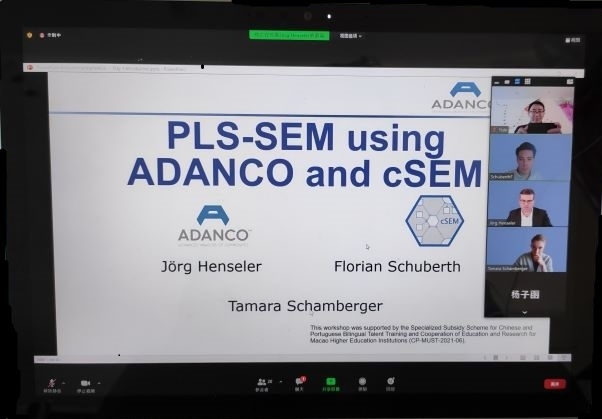In order to strengthen international academic exchanges and cooperation in the field of structural equation modeling and data simulation, and explore the key and cutting-edge academic issues of current structural equation modeling, the business school held a series of training courses on research methods (partial least squares path modeling and Monte Carlo simulations) from February 14 to March 7, 2022. This training course is strongly supported by the Macao Higher Education Fund.

The training course attracted more than 70 university scholars from universities and research institutions in 8 countries or regions, including Macao, Portugal, the United States, Spain, Malaysia, Germany and the Netherlands, to deeply explore the latest developments in the field of data analysis and business research.
Professor Jorg henseler of the University of Lisbon, Portugal, was invited to teach the training course, with the support of Professor Florian schuberth and Ms. Tamara schamberger of the University of Twente, the Netherlands.
Professor Jorg henseler introduced the theoretical basis of structural equation model, common quantitative research methods, paper writing suggestions and relevant journals published by structural equation model, and pointed out the importance of following up new methods in the field of structural equation. At the same time, Professor henseler described the basic use methods of structural equation model analysis software adanco and R-package CSEM, and led teachers and students to carry out relevant software operations.
This course consists of eight courses. Teachers and students participated in in in-depth discussion and exchange on the progress of structural equation model, partial least squares structural equation model prediction, parameter estimation, model evaluation, group analysis, high-order variables, complex data and data simulation.
During the course, teachers and students of the business school had in-depth exchanges with experts and scholars at home and abroad and discussed issues in common areas, which laid a foundation for further scientific research cooperation and academic exchanges.





